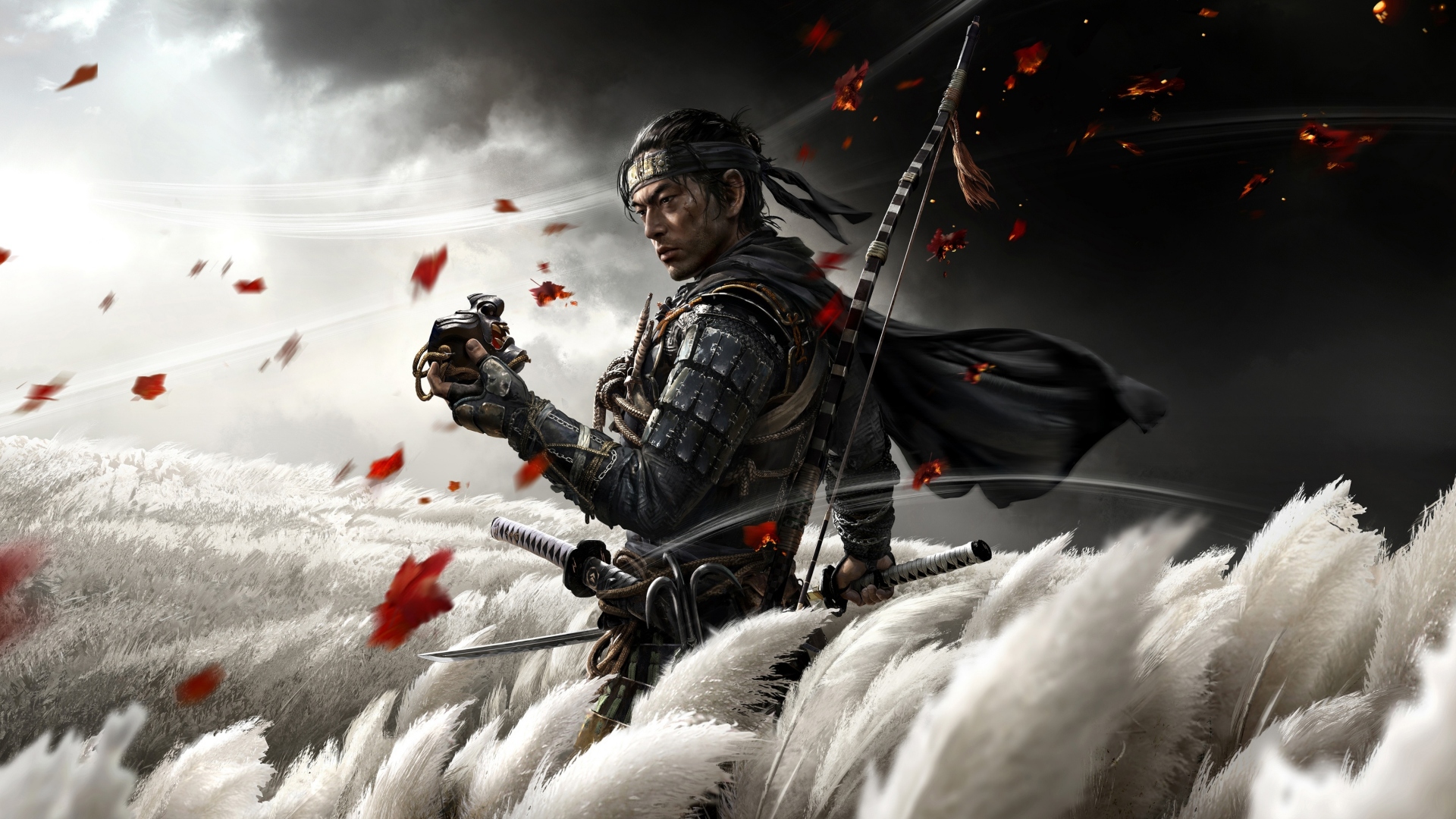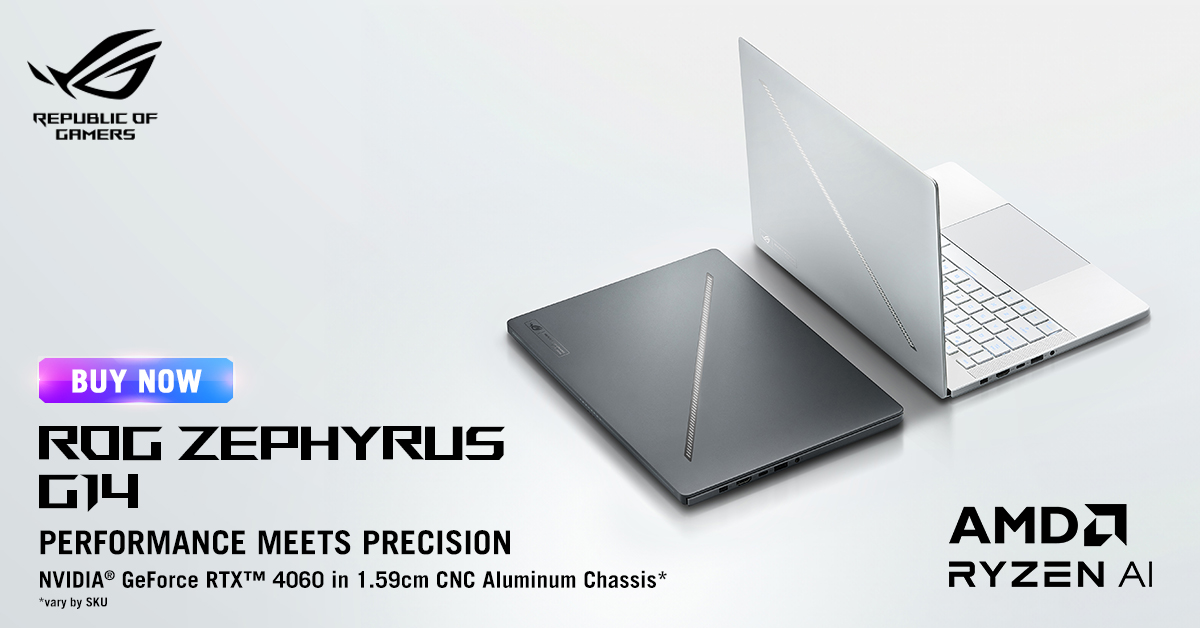Developed By: Sucker Punch Productions
Published By: Sony Interactive Entertainment
Platforms: PlayStation 4
Reviewed On: PS4PRO
Sucker Punch is probably my favourite Sony first-party developer as the Sly Cooper series is one of my favourites ever with lovable characters and fun gameplay. In my opinion, they only cemented their status more with how amazing the Infamous series turned out. I felt that even with First Light coming out last, they still had plenty of stories left to tell in that universe and shifting to a new IP was both exciting and nerve-wracking. Could lightning strike thrice (no pun intended) and birth a new series to join the ranks of so many beloved classic PlayStation titles? Thanks to PlayStation Asia we managed to secure a review copy and set off on our journey on the island of Tsushima.
After obsessively playing through everything the game had to offer in my almost 50+ hours playthrough, I can conclusively say that Jin Sakai definitively joins the ranks of Kratos, and Aloy in carving out their legacy of being the faces of the PlayStation brand. However, a few inconsistencies that while feeling small, managed to pile up towards the end to prevent this game from scoring higher than it did.
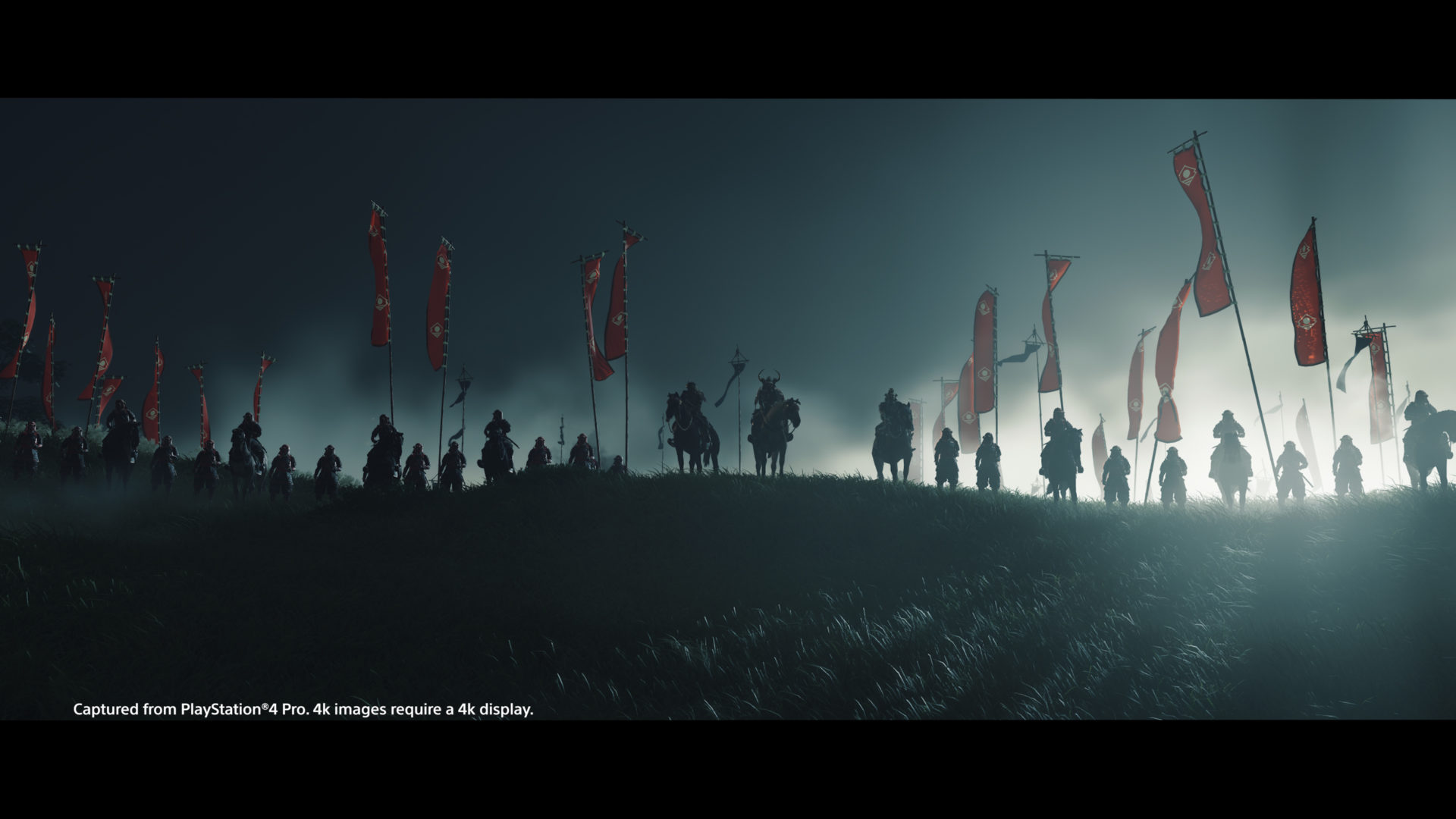
Clear skies and clear mind
Swaying freely in the wind
Growing ever strong
Ghost of Tsushima tells the story of how the Mongol army overwhelmingly invades the island of Tsushima by Khotun Khan and almost wipes out the samurai. As one of the last surviving samurai, it is up to Jin Sakai to slowly free the local population and restore order to a land besieged by chaos. Along the journey, Jin will meet interesting characters that will aid him on his quest to repel the Mongols like Yuna, Sensei Ishikawa & Lady Masako which to the end feel so beloved and integral to the journey as Jin is.
There are three main acts that players will play throughout the game. Each act will also be supplemented by side quests or as they are called in this game, Tales. Now I quite like how quests are handled in this game as although there are familiar but there is also something new that the developers were clearly trying to attempt. Players will come upon a few types of Tales with the first being Tales that are meant to provide a little history and flesh out how the island’s populace are being affected by the invasion. The second type is character-focused Tales that are meant to develop the supporting cast of characters that complement Jin on his journey. Lastly, there are Mythic tales that are based on Japanese folklore which upon completion provide beneficial rewards for the player.
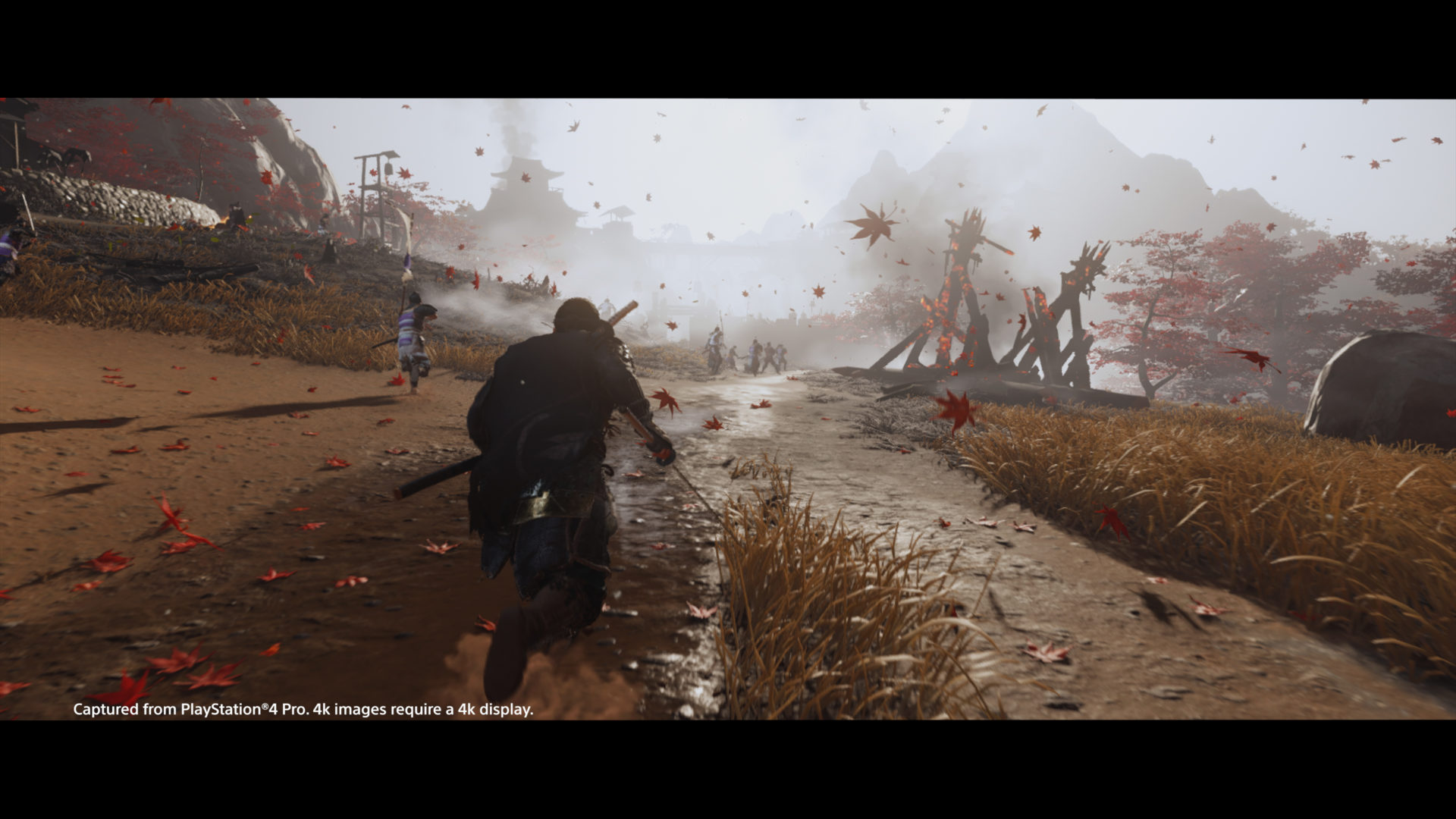
Initially, I was not too impressed with the quality of the Tales but although some do feel pretty basic especially the ones that are for fleshing out the open world, some are very well done and surprisingly insightful. Even though they can be short, but the writing can be very deeply affecting.
The Mythic Tales are usually reserved for special armour or weapons that have a legend attached to them told beautifully with illustrated cut scenes. Each Mythic Tales feel unique enough in how they play out with some involving puzzles, platforming or even introducing a survival element to it to make the player feel the grandiosity and significance of attaining said item.
The Tales that explore the side characters are the ones I enjoyed the most as even though each section ranges from short to average length quests, they almost always end up providing significant and very meaningful development for the character they are focusing on. Each character’s past, their standing in society, motivations, memories, and more is shared with Jin and the player to further develop the bond shared between characters and attachments players will have. There was one companion quest that brought tears due to how it just connected emotionally with me and I just really loved the quality on display there.

I deeply enjoyed the writing in Ghost of Tsushima as I found that they did strike almost a perfect balance between filler quests and emotionally affecting ones that would connect with the player and get them invested in the game. However, when it came to the main narrative, I did find issues-particularly early on and late in the game.
Early on I did find myself having difficulty connecting with the narrative due to how I was just thrust into the story and although we already know the Mongol’s first strike was almost a fatal one but the tragedy of it just did not feel heavy enough to warrant that emotional connection from the player. This is in part of how early on Jin does not feel like THE guy. For me at least it even feels like it’s framed like Jin is not someone that is remarkable in the samurai ranks but just the nephew of the jito, Lord Shimura.
Thankfully, the journey does improve significantly, and it was just a joy to learn and grow alongside Jin Sakai as he fights for his land, his people, and his honour. There was a pivotal moment in Act II where I had goosebumps and was just in awe at how amazing the journey had peaked at that moment in time but unfortunately, this brings me to my second issue with the main narrative of the story.

They successfully develop important plot points in Act II that felt incredibly interesting to where they might go next but for some reason just felt like it was just dropped in the next act. I am not saying that Act III was bad, the game actually ends quite beautifully, and some things do play out very nicely especially concerning your companions but it just felt like it was building to this amazing crescendo that just never came.
They also flirt with the idea of Jin perhaps straying too far from tradition and due to the developers pedigree of having a morality system in Infamous, I thought that there was one here due to how seemingly random these “moment”s pop up but there just wasn’t.
I was also left disappointed by Khotun Khan due to how underwhelming he ends up being. As great as Jin’s journey to become the Ghost was, it was kind of a huge missed opportunity in my opinion that it was not mirrored in Khotun Kahn’s journey as the central villain of the game. They do try to flesh him out via records found throughout the game, but his presence just really needed to be felt more in confrontations with the player. Sure, he is present in some big moments throughout the game but in the end, I did not feel anything for him as the villain.
Early on I did fear that Ghost of Tsushima would fall into the same category as Days Gone in being good but never great but thankfully the game continued to improve exponentially along the way. For me, there is no doubt that there were some aspects of the main narrative that fell short, but Sucker Punch managed to create a game that captured the essence of classic samurai films to its core.
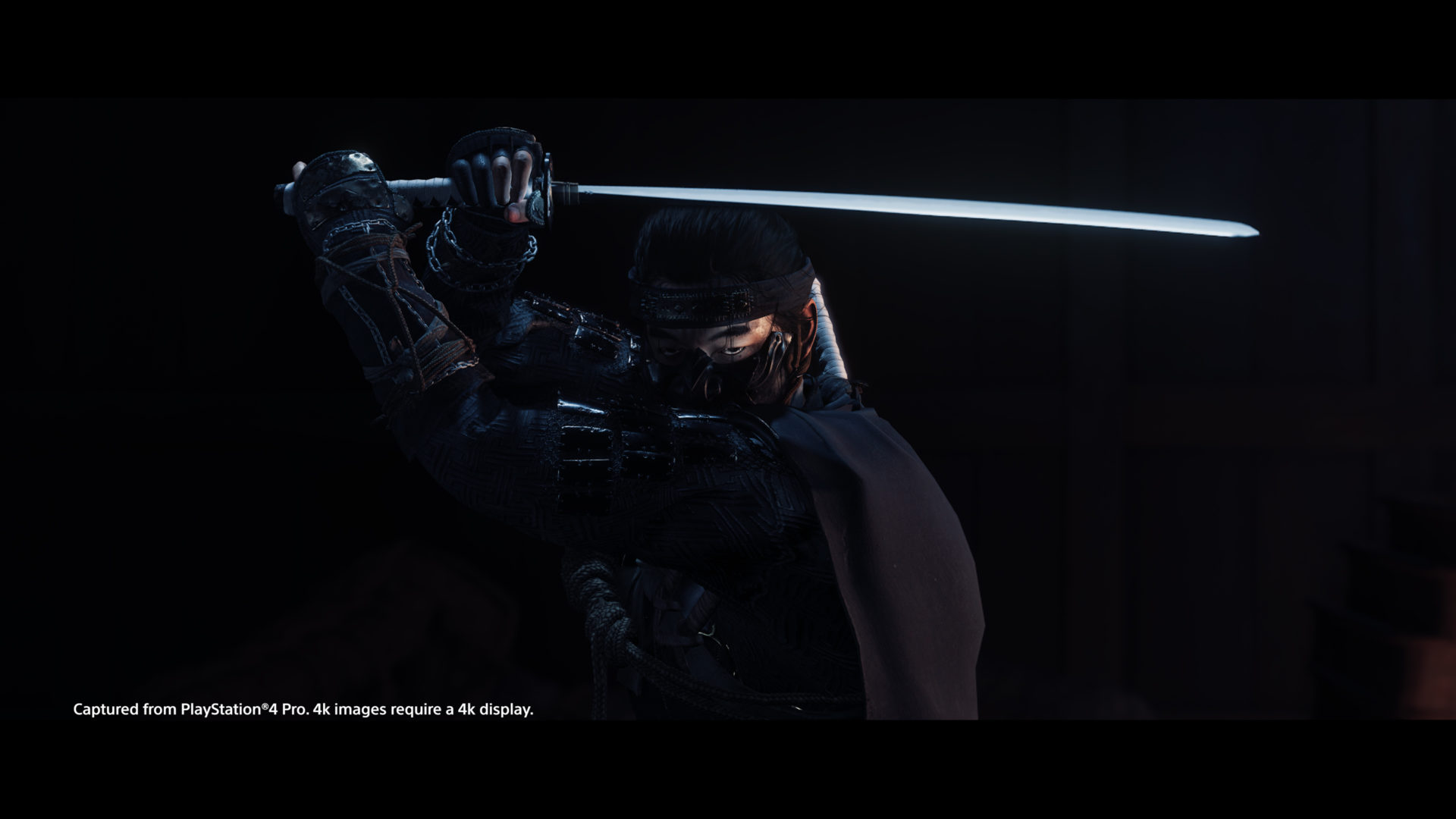
A journey awaits
Sit beneath the golden shroud
Cleanse yourself from pain
Fans have been treated to trailers and gameplay demonstrations of this game in motion and I can confirm that Ghost of Tsushima is just absolutely gorgeous. There is a certain illustrative element to the game that feels so incredibly stylized and oozing with atmosphere that grabbed me almost immediately.
Every single location in this world is so well-realized and designed that I just could not help myself to explore every inch of it. There is always something unique to see and the sights themselves are almost always enticing the player to take photos. I took close to a hundred pictures of everywhere I travelled to in the game due to how I just wanted to capture everything.
One of the things that impressed me was how a game that looked this good had such a small file size with at this moment only clocking in around 32GB. It is made even more impressive due to how fast travel is crazy fast in this game. Even end to end it takes only about 3-5 seconds for the game to load back up. When I first realized that I was just truly taken aback. I mean if with the PS4 we can already achieve this who knows what else can be achieved when the PS5 comes around.

The sound design and mixing in this game is also on such an impressive level with the soundtrack being a particular standout. I really cannot express enough how much I just love the soundtrack in this game that just perfectly captures every single scene. From tense moments, to ones to inspire, and even to deeply sorrowful ones the soundtrack is just nothing short of masterful for me. The Way of The Ghost is just such a beautiful and arresting track that will be on my playlist for years to come.
When it comes to battles, whether it might be just a standoff to fighting against mobs of enemies the sounds of blades clashing and arrows whizzing past feel very appropriate and elevates the tension even more. The voice acting in this game whether in English or Japanese is also thankfully performed incredibly well.

Unfortunately, there were a few things that might sound like nit-picks, but it just happened often enough for me to be bothered by it. The first thing that bothered me was the lip-synching in this game. There is no lip-synching with the Japanese voice tracks and even with the English voice tracks, it is weirdly inconsistent. Some conversations feel fine but others can feel stiff and not synched at all. It starts to feel like the developers were even trying to mask it with conversations that happen from a distance. There was even some stuttering but that happened fairly early and oddly only during one cutscene that it felt negligible.
The HDR in the game also feels like it is not tuned right. I would say about 80% of the time and mostly when you are outdoors it looks beautiful. As soon as the weather changes though sometimes it gets incredibly bright and does not feel natural at all. It is even more apparent when you walk into a building sometimes it is so dark that I just cannot see anything. I fiddled around with the brightness settings in-game and with my TV and finally just settled on at least being able to see inside buildings. This feels the strangest to me due to how the HDR in Sony first-person titles is always so incredibly implemented. Also, why does the weather change so unnaturally fast at times?
As much as I love the soundtrack as well, most of the time when I’m just riding around there wasn’t any ambient music to accompany you but then there were random moments where the music just came on and I just couldn’t find what triggered it.
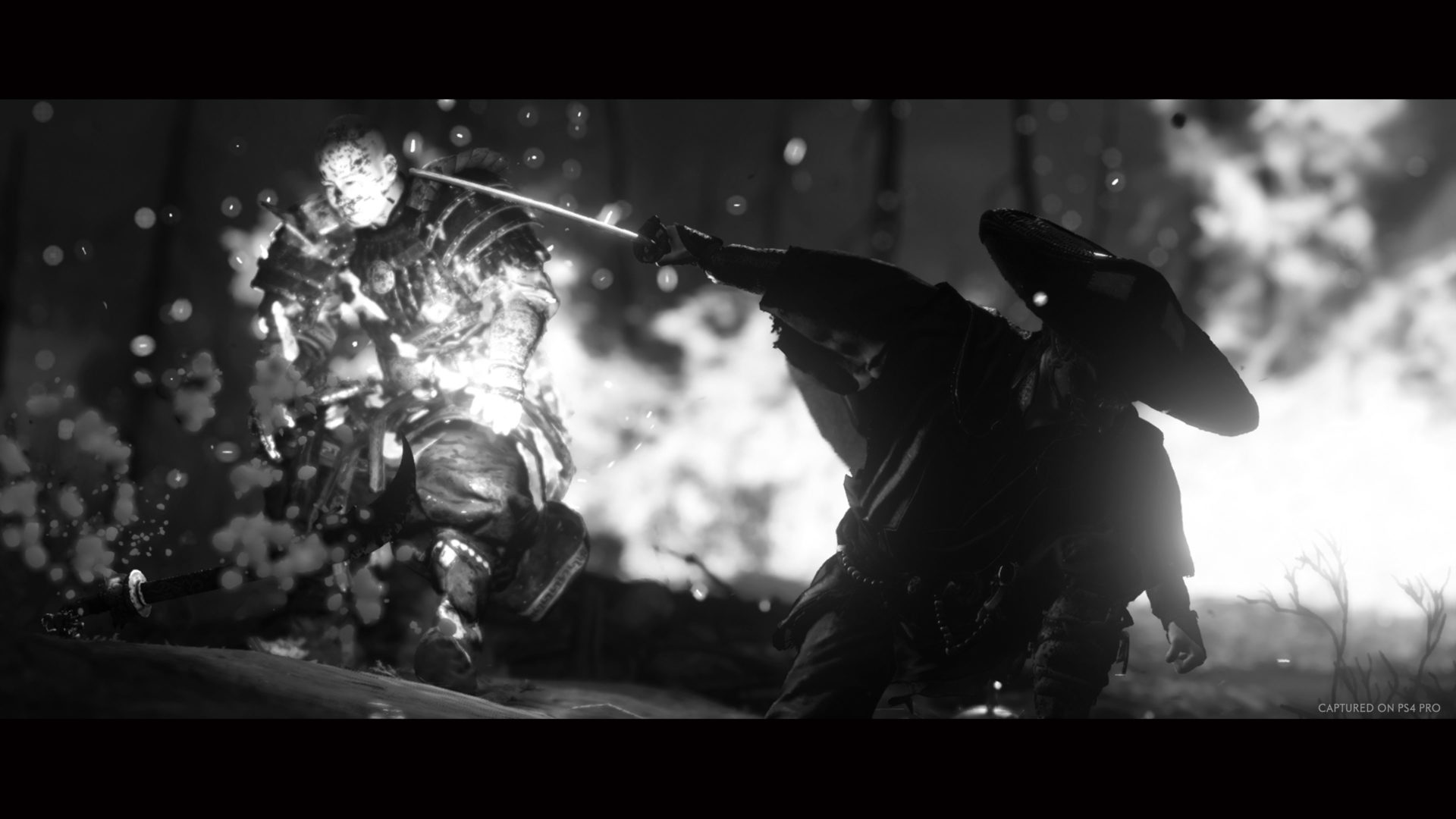
Lanterns in the dark
Fear of what’s lurking beneath
Guarded by wisdom
I honestly believe that they managed to strike a balance perfectly well in carving out a system that is their own without feeling like it was inspired or lifted by other existing mechanics in other games. The gameplay itself focuses on two pillars which is Exploration and Combat.
The minimalism in exploration is something that I am impressed with immensely as the philosophy adopted here seems to be almost intentionally in contrast to other big-budget titles that have hundreds of icons littered about the map screen. Tsushima is divided into three major provinces which are Izuhara, Toyotama and Kamiagata with each having their sub-provinces. Aside from towns or farmsteads, points of interest for players to discover in the open-world include fox dens which will lead you to Inari shrines for minor charms, hot springs that will extend the life bar, bamboo strikes to extend the resolve bar, or even pillars of honour with vanity items to discover.
What impressed me the most is how the open-world itself compels the player gently to explore the surrounding by minimal notifications and even a golden bird that will fly by to nudge the player that there is something of interest to explore nearby. It feels very organic and natural which I deeply appreciated because many big-budget open-world games just litter the map with so many icons it just triggers my inner OCD to clear them. The map screen here just feels appropriate and not too busy. Almost every explored point of interest unlocks a fast travel point and what makes it even better is how fast travel is incredibly fast like I mentioned earlier so collectible hunting does not feel like a time-waster.
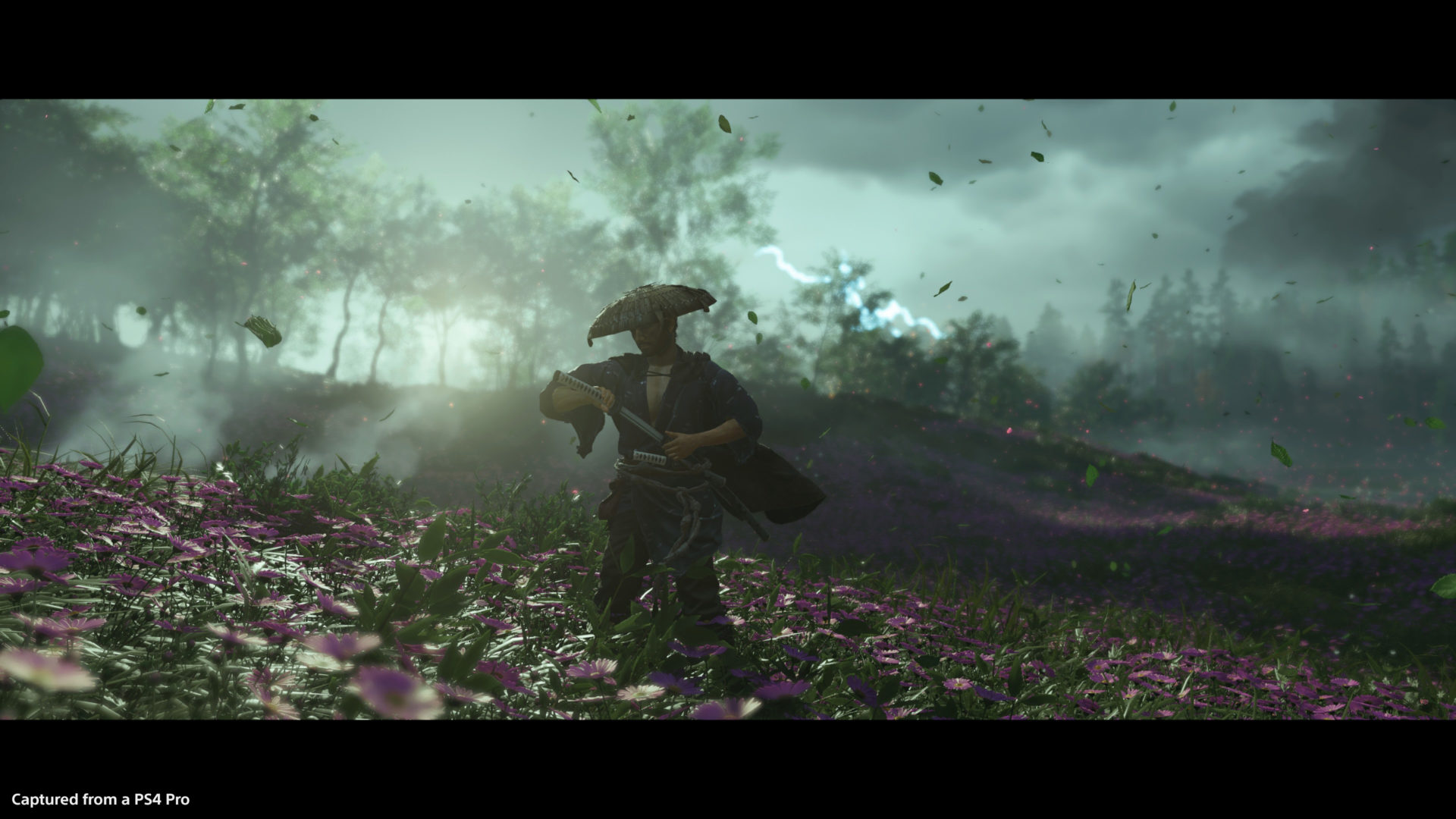
One of the best things about exploration is also the Shinto Shrines. These shrines are sprawling areas that will reward players with major charms but the path to get to them has been destroyed by war or nature. For players to navigate and reach the end of the shrine they will have to do a bit of platforming. The first few shrines were considerably basic, but I did appreciate how the later ones require more effort almost to the extent of tomb raiding. There were no traps, etc, but it still felt genuinely nice navigating the environment.
However as amazing as the experience is it also highlights how the platforming in this game is also surprisingly not great. Coming from the developers of Sly Cooper and Infamous the platforming can be quite hit or miss with some platforming sections requiring unnaturally specific points to grab on to and at times can be frustrating. Even some animations seem to not trigger like when Jin climbs up from a water source he tends to just “float” and not climb. One thing that bothered me a bit more than it should was how the grappling hook ended up being more like a grappling gun the way the animation plays out.
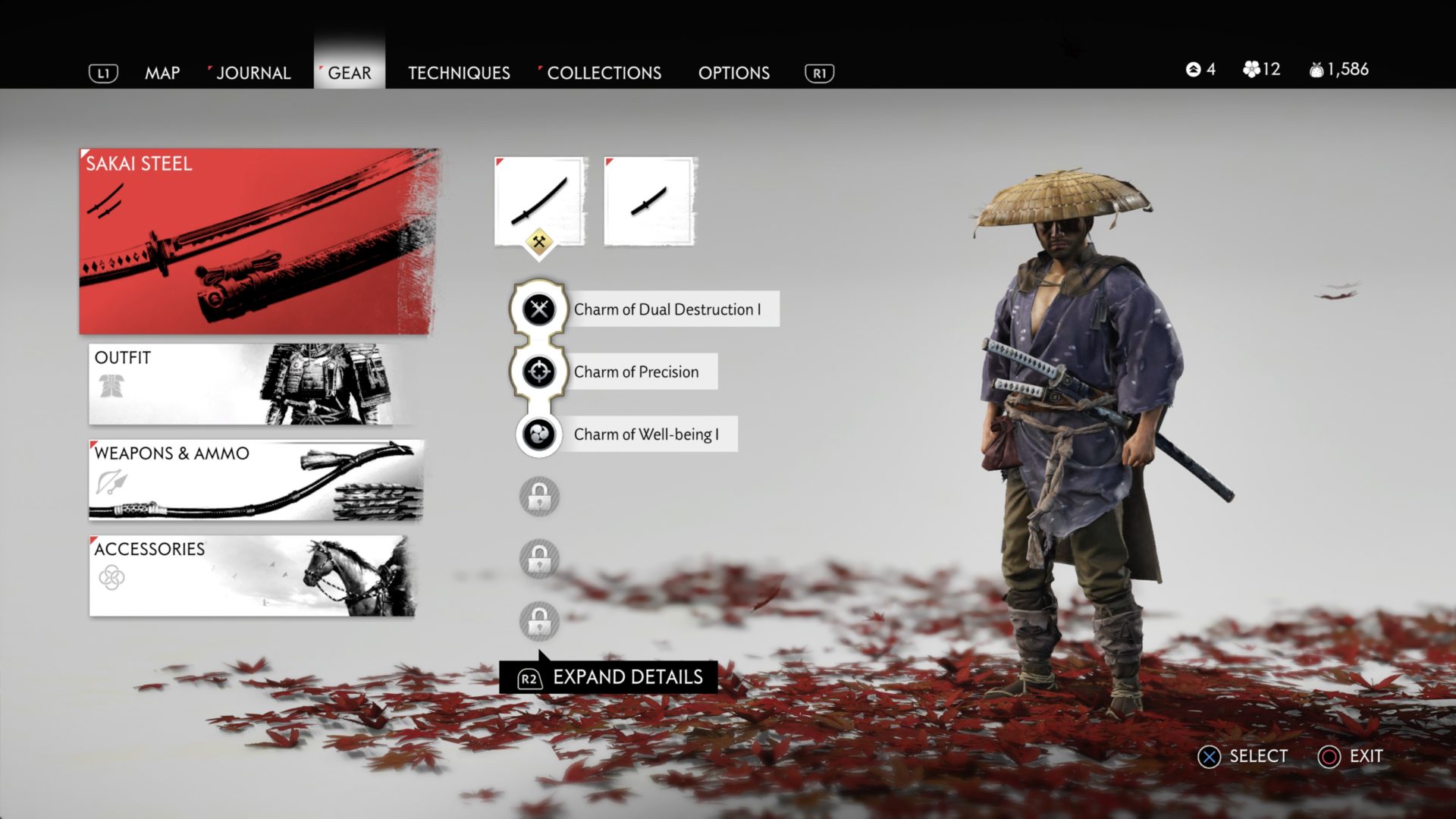
I think the biggest question on everyone’s mind is how good is the combat in this game? For me at least I thought it was damn good. Now when starting the game players will be given the choice to pick between three difficulty modes which can be changed anytime. I played the game through to the end on Hard mode and in the beginning, it did feel a little tough because of how barebones it is but after unlocking more techniques and ghost weapons battles become more manageable. Once you get the hang of how everything works, I can guarantee that you will feel like a badass samurai and do believe that Hard mode is the way to play it.
Controlling Jin in battle can be confusing at times but I would liken every battle to a dance. It’s all about getting the right rhythm down and battles flow beautifully. The basic control scheme that players need to acquaint themselves to is square button is for light/normal attacks, the triangle button is for heavy attacks to break enemy guards, the circle button is to dodge, x button is to jump and L1 to parry or block. The extended move set include the R1 button for ghost weapons like using kunai and holding down the L2 button is for throwables or using the bow. The two things that players will need to keep an eye on is health and resolve. Health is self-explanatory but resolve is used for special moves and also to heal yourself when hurt in battle.
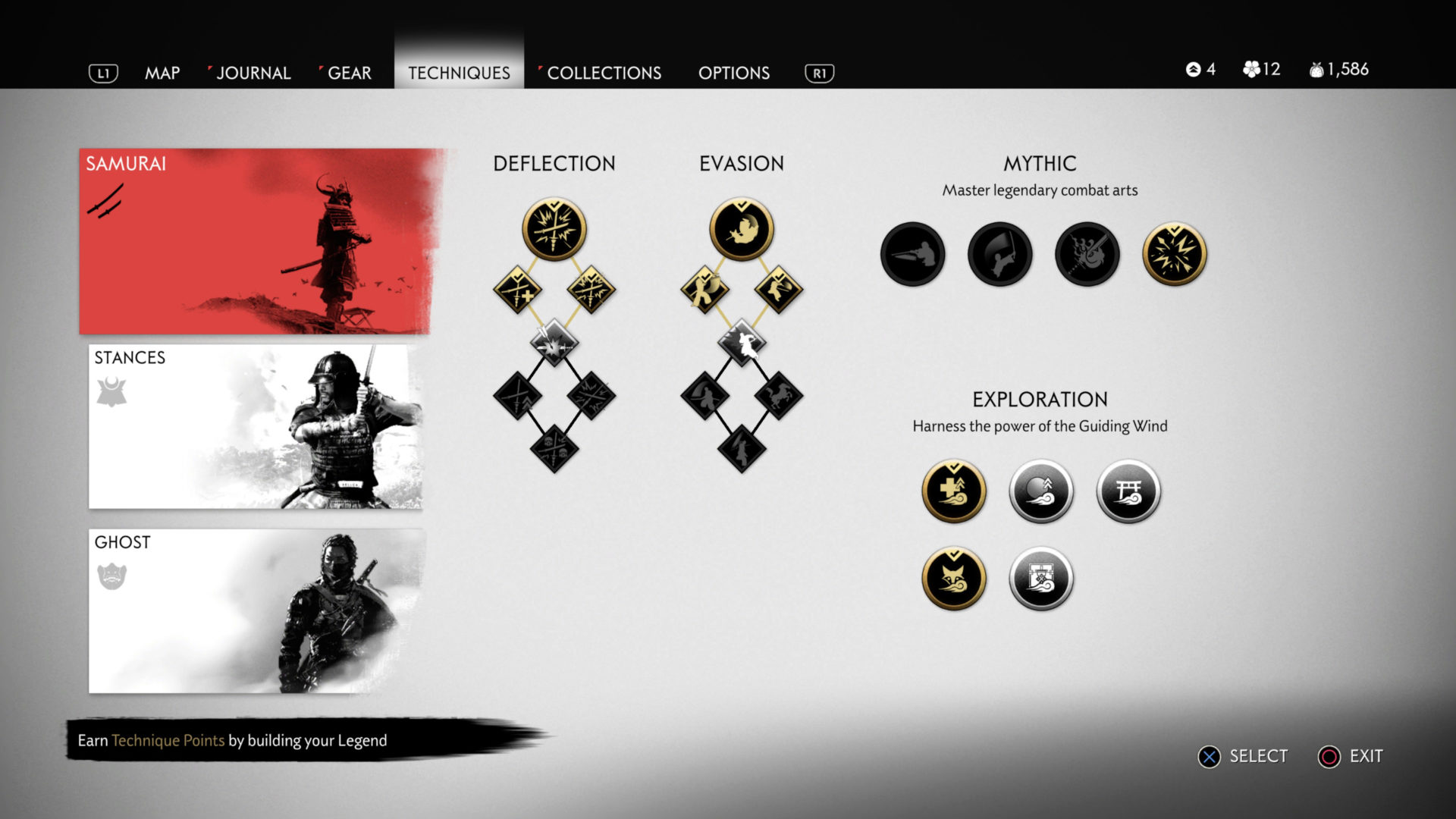
Like I mentioned earlier depending on the difficulty level players might find the early on to be a bit of a challenge due to how basic the move set is. Thankfully, players will be able to upgrade Jin as they play along as after every encounter Jin will accumulate legend points. These legend points are for unlocking techniques in the three main pillars and serve as a benchmark to how Jin’s legend grows in Tsushima.
The first upgrade pillar is Samurai which focuses on enhancing existing techniques like unlocking Perfect Parry or Perfect Dodging that when executed perfectly allows the players to one-hit kill standard enemies. In this same section as well, players can unlock guiding wind exploration options to help them navigate to finding fox dens or shrines. When completing Mythic Tales as well players will unlock special moves like heavenly Strike that does extra damage to staggered enemies and even terrify others when the enemy is killed.
The second upgrade pillar is Stances that unlock rather uniquely. Each of the four stances are advantageous against their enemy type: Stone (Swordsmen), Water (Shieldmen), Wind (Spearmen), and Moon (Brutes). First unlocking these stances require players to observe or kill captains that are usually located in enemy bases. After unlocking them players can then enhance each stance by giving it more damage or even extending their combos.
The third upgrade pillar is focused on Ghost where players can unlock the usage of ghost weapons like the kunai, smoke bombs, or wind chimes to distract enemies. Players will also be able to unlock evolving tactics like assassinations, archery, being able to perform standoffs and being able to use resolve to recover health.
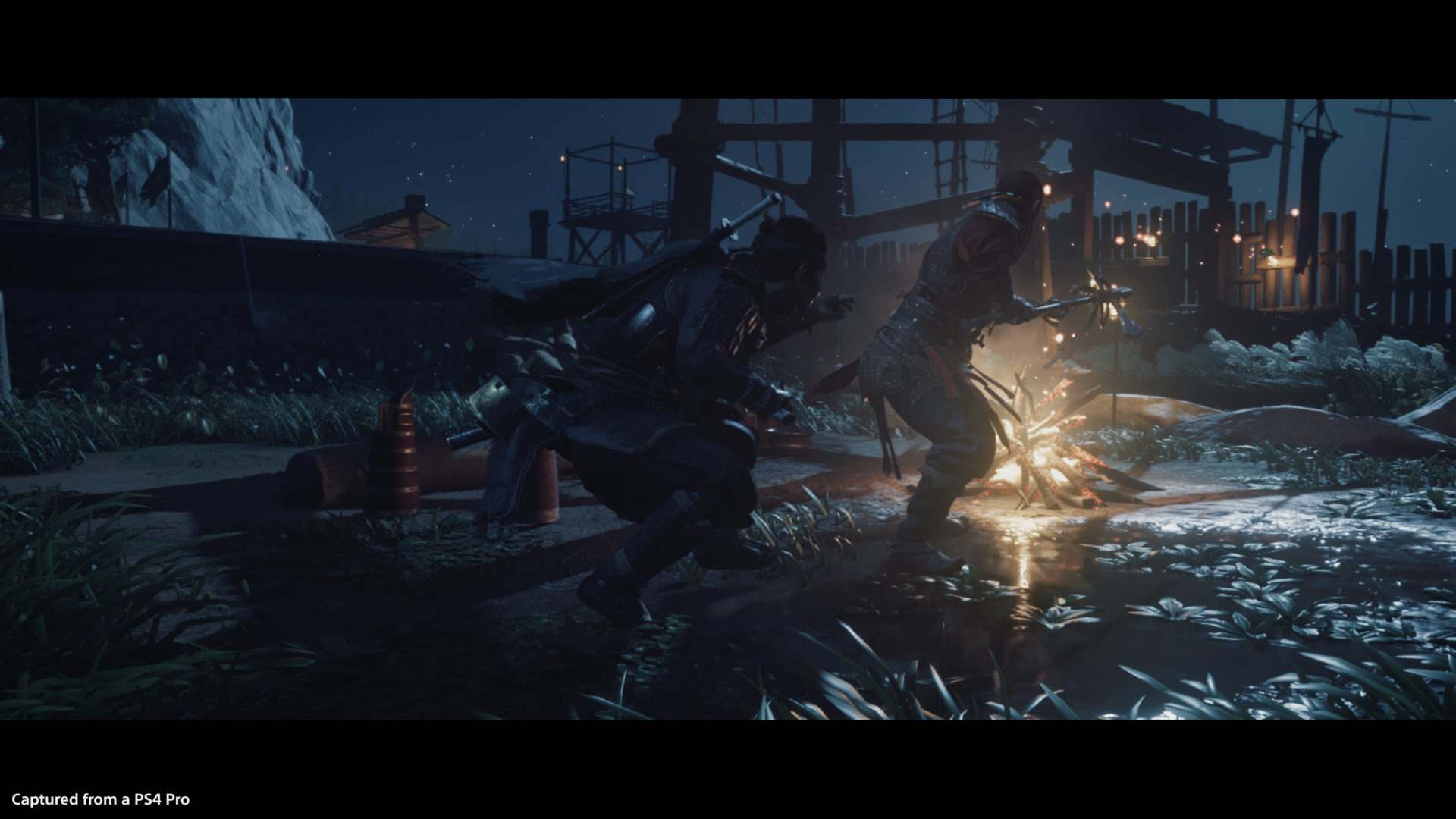
When it comes to customization some aspects directly influence gameplay. The Sakai Katana and Tanto that Jin uses can only be customized cosmetically together with the headband and mask. When it comes to armour’s however each armour set provides different perks. The Traveller’s set is geared more towards exploration and provides benefits such as clearing the map fog up to a 30% bigger range. The Samurai set boosts health and reduces damage receives and when fully upgraded even gives players resolve every time taking a hit which can be useful in a pinch especially when facing bosses.
As a whole combat in this game is incredibly satisfying due to how well designed it is. I can argue that on hard difficulty players might encounter frustrating encounters where enemies will swarm you but even then, it’s all about battling smartly and using all the tools at your disposal. Duels are just the highlight of combat due to how tense and unforgiving it can be especially with tough bosses but once you are fully upgraded you can find a way to steamroll over any boss. Even so, it does not make it any less of a spectacle.
What about stealth? Is it viable? It’s situational actually. I found that some encounters can be cleared entirely via stealth but some feel like they can’t. This is due to how the enemy A.I is both good and also hilariously aggressive at times. For example, enemies lock on to you for way too long even if you are miles away. Next, especially in the late game when you clear an enemy to open a window to slip past that sentry position, once another enemy notices the body it just takes it’s place. In the end, I usually just take the samurai destroyer route.
One thing I quite enjoyed from the gameplay is how when it starts to feel stale, they do throw new enemy types at you just to keep things interesting. Also, I personally really liked how when clearing enemy encampments or farmsteads you do see them healing and the population moving back into routine life. That for me just adds to feeling that whatever I do as a player in the open world accomplishes something and not the same enemy encampment being repopulated ad nauseum.
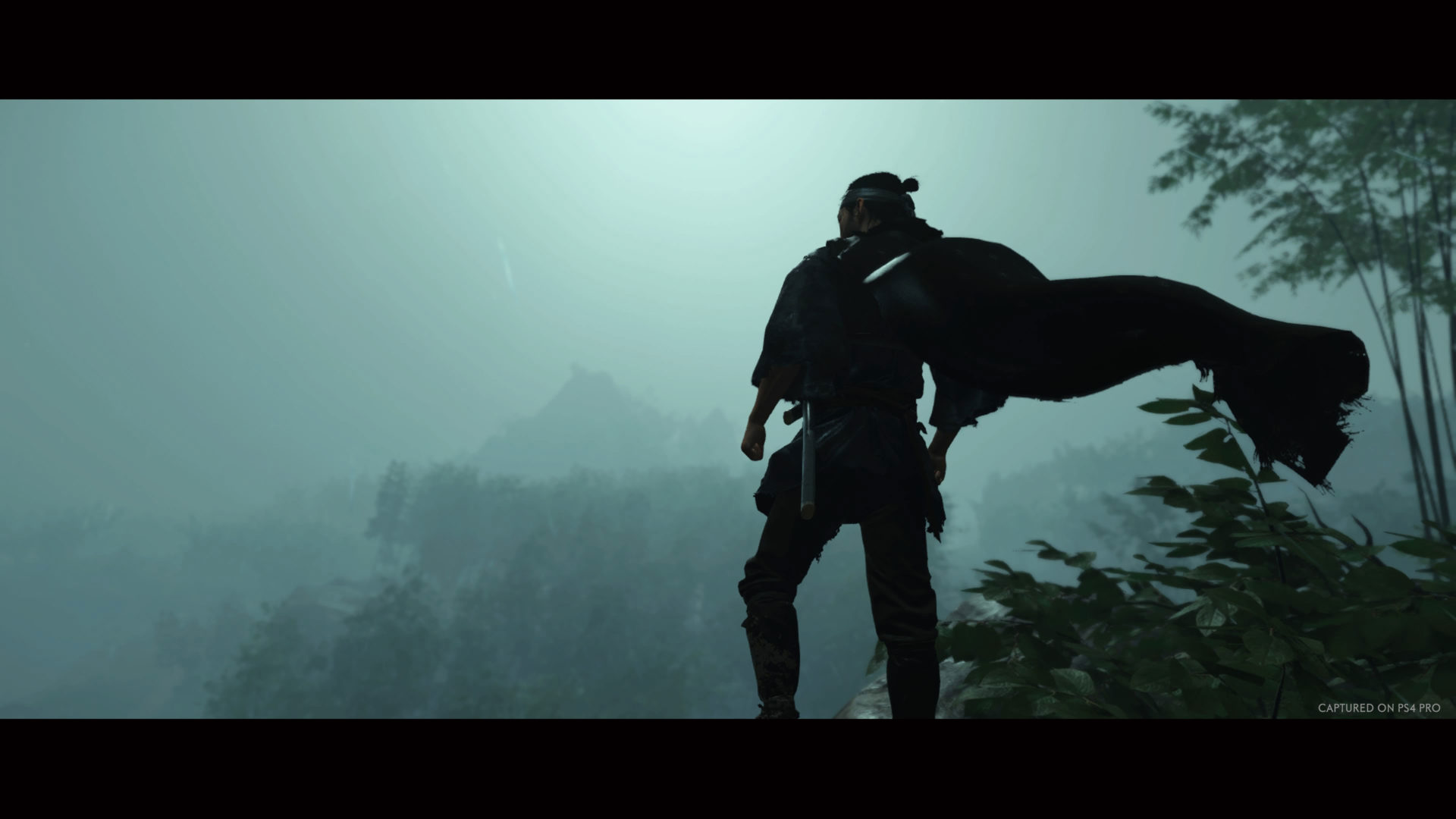
What I Loved
- Combat – So incredibly satisfying. Many times I just proudly proclaimed to myself how much of a badass samurai I was when defeating enemies while my wife laughed from a distance.
- Soundtrack – Another incredible highlight for me in the journey especially in important moments elevating the appropriate emotion from me as a player.
- Characters – I also really love the cast of characters that joined Jin on his journey that most importantly feel connected to each other and not just conveniently there.
- Exploration – I enjoyed following the wind and exploring shrines just a shame the platforming just was not as tight as it needed to be.
- Graphics – It really can’t be denied how great this game looks in motion. Just a shame about how the lighting can be inconsistent.
- Photo Mode – I love how accessible it is with just a press of the right dpad button to take awesome pictures at any time.
- Minimalism – Absolutely love the minimalistic approach to UI and exploration.
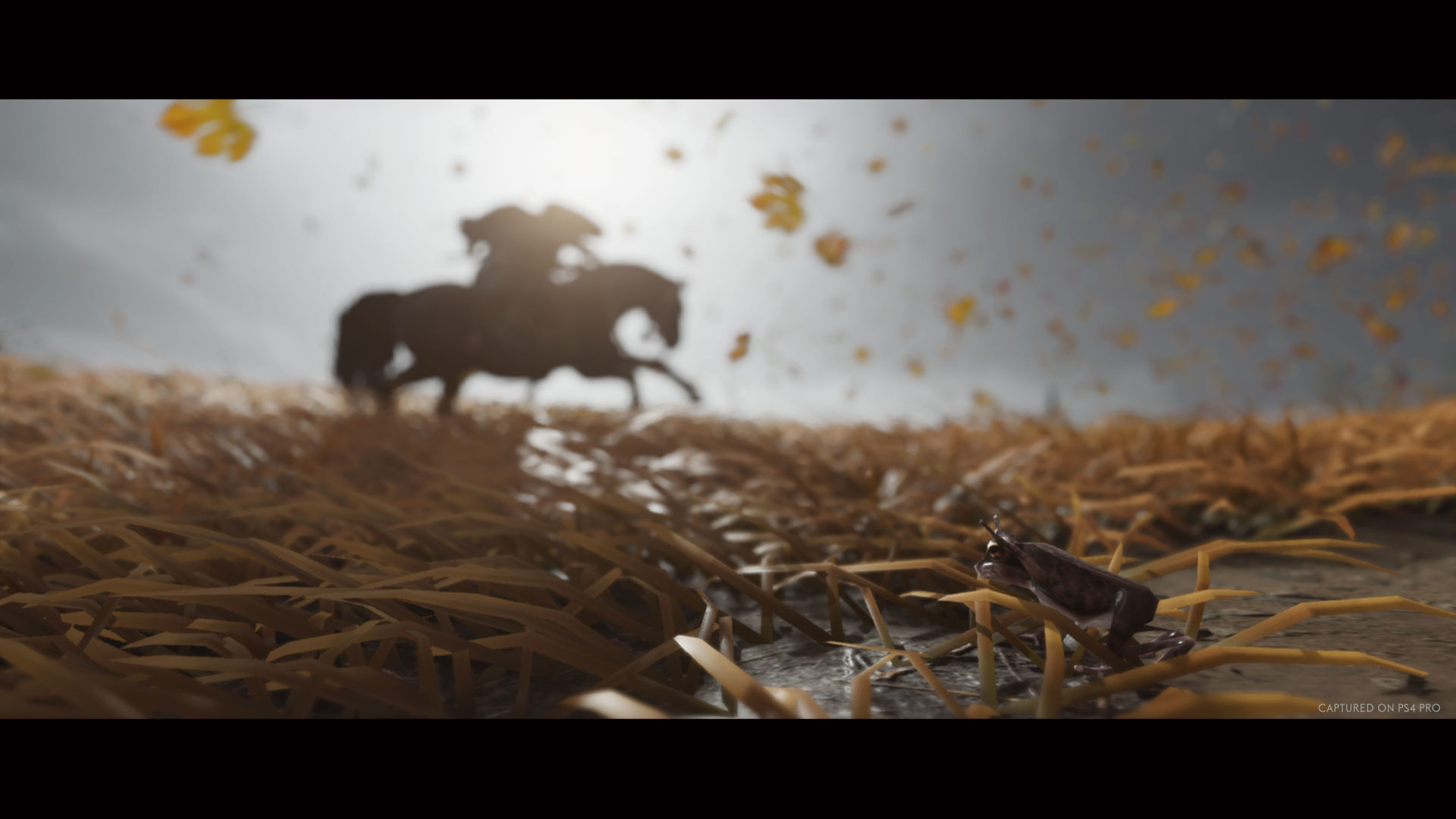
What I Wished Was Better
- Story – I thought it was well done and does capture the essence of samurai cinema, but I do keep coming back to how the tease of potential things unfolding just never happening in Act III.
- Janky Bugs – There were so many weird bugs like floating climbing animations, me attacking an enemy only to be launched in the air and die on impact, and the most hilarious one being a decapitated enemy just crawling around on the ground in what felt like forever. I know that it is fixable like with the lighting, but it just happened so often it started to bother me quite a bit.
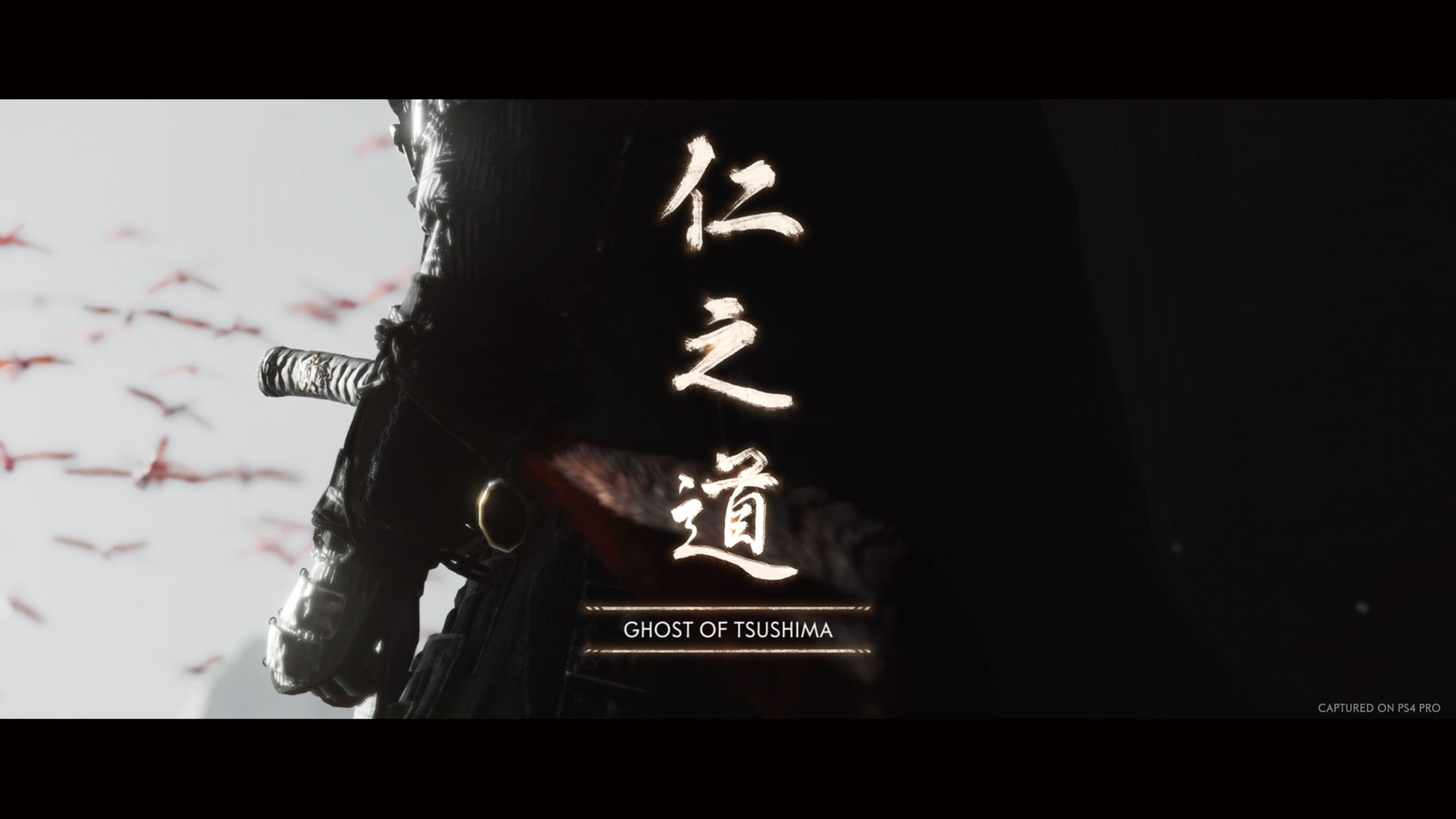
To Be No More Than Dust Before The Wind
Starting a new IP is never easy and there is the gamble that players might not take to it at all. I do firmly believe that Sucker Punch does have a very strong new IP on their hands and Jin Sakai is most definitely a very compelling character to get behind for years to come. I am also quite impressed with how amazing the combat turned out in this game. Sucker Punch set out to create a game that encapsulates the very essence of samurai cinema as they have proudly shared in interviews and I do believe they have done that. Even though for me it did not turn out to be a game of the year candidate but it is still a very good game that players should play and honestly I just cannot wait for what’s next for Jin Sakai and Sucker Punch.
